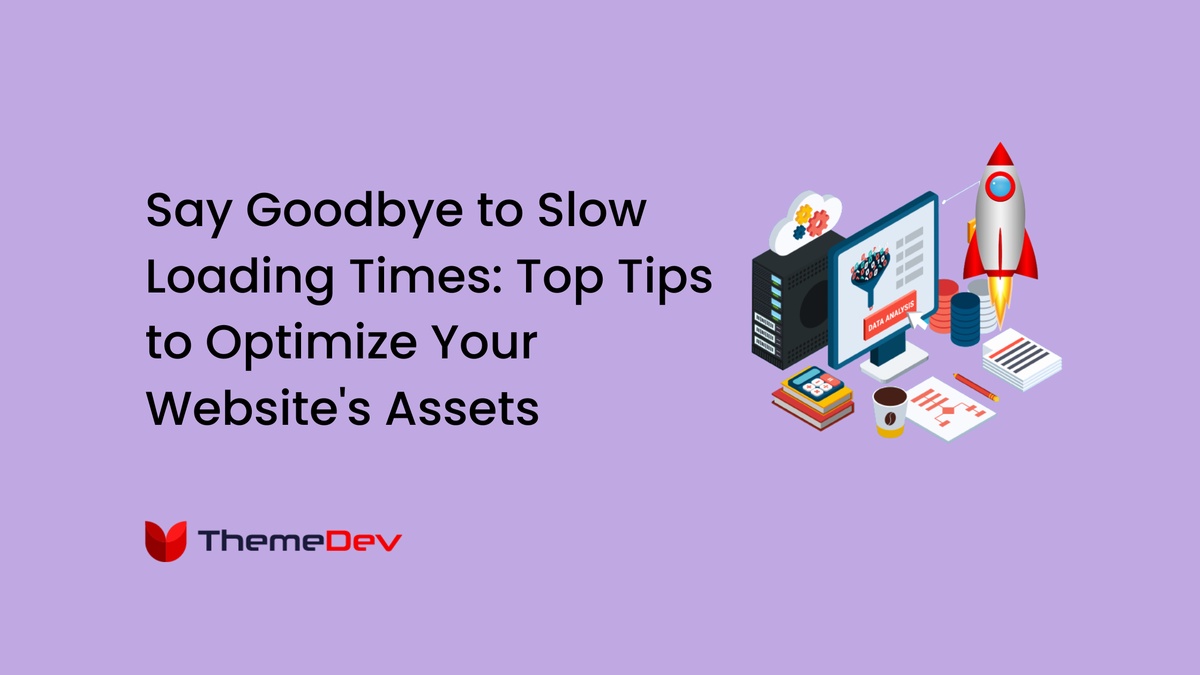Optimizing website loading assets and reducing loading time is crucial for providing a smooth user experience and improving search engine rankings. Here's a comprehensive guide on how to achieve this:
1. Compress Images and Videos
Large media files are a common cause of slow loading times. To optimize your website, consider the following:
-
Image Compression: Use tools like TinyPNG or JPEG Optimizer to compress images without compromising quality. Also, utilize the "srcset" attribute for responsive images to load appropriate sizes based on the user's device.
-
Lazy Loading: Implement lazy loading for images and videos. This means that these assets will load only as the user scrolls down the page, reducing the initial load time.
-
Video Optimization: Use formats like MP4 and WebM, and consider hosting videos on platforms like YouTube or Vimeo and embedding them. This reduces the strain on your server.
2. Minimize HTTP Requests
Every element on a webpage, including images, scripts, and stylesheets, generates HTTP requests. Minimizing these requests can significantly speed up your site:
-
Combine CSS and JavaScript: Merge multiple CSS and JavaScript files into one or use a minification tool to reduce file size.
-
Use CSS Sprites: Combine small images into a single sprite image. This reduces the number of image requests.
3. Browser Caching
Leverage browser caching to store static assets on a visitor's device, reducing the need to re-download them with each visit:
-
Set Proper Cache Headers: Configure your server to send appropriate cache headers. Use tools like "mod_expires" for Apache or "expires" for Nginx.
-
Version Your Assets: Whenever you make changes to your CSS or JavaScript files, change their version number in the filename. This forces browsers to re-download updated files.
4. Content Delivery Network (CDN)
A CDN distributes your website's assets across multiple servers worldwide, reducing the geographic distance between users and your server:
-
Choose a Reliable CDN Provider: Select a reputable CDN provider like Cloudflare, Amazon CloudFront, or Akamai.
-
Implement Proper DNS Settings: Ensure that your DNS settings are correctly configured to make the most of the CDN's benefits.
5. Optimize Server Performance
Your web server plays a vital role in loading speed:
-
Choose a Fast Hosting Provider: Invest in quality hosting with a fast server response time. Consider SSD storage for quicker data retrieval.
-
Implement GZIP Compression: Enable GZIP compression on your server to reduce file sizes transferred over the network.
6. Eliminate Render-Blocking Resources
Render-blocking resources like JavaScript and CSS can slow down the rendering of your page. To fix this:
-
Inline Critical CSS: Inline the CSS needed for above-the-fold content to render the page faster. Load non-critical CSS asynchronously.
-
Load JavaScript Asynchronously: Defer non-essential JavaScript and load it asynchronously. This allows the page to load without waiting for scripts to finish executing.
7. Monitor and Test
Regularly monitor your website's loading performance:
-
Use Tools like Google PageSpeed Insights and GTmetrix: These tools provide insights and recommendations to further optimize your site.
-
Test from Different Locations: Check your site's loading time from various geographic locations to ensure a consistent experience for users worldwide.
By implementing these strategies, you can significantly improve your website's loading speed and provide a better experience for your visitors while also positively impacting your SEO rankings.


No comments yet